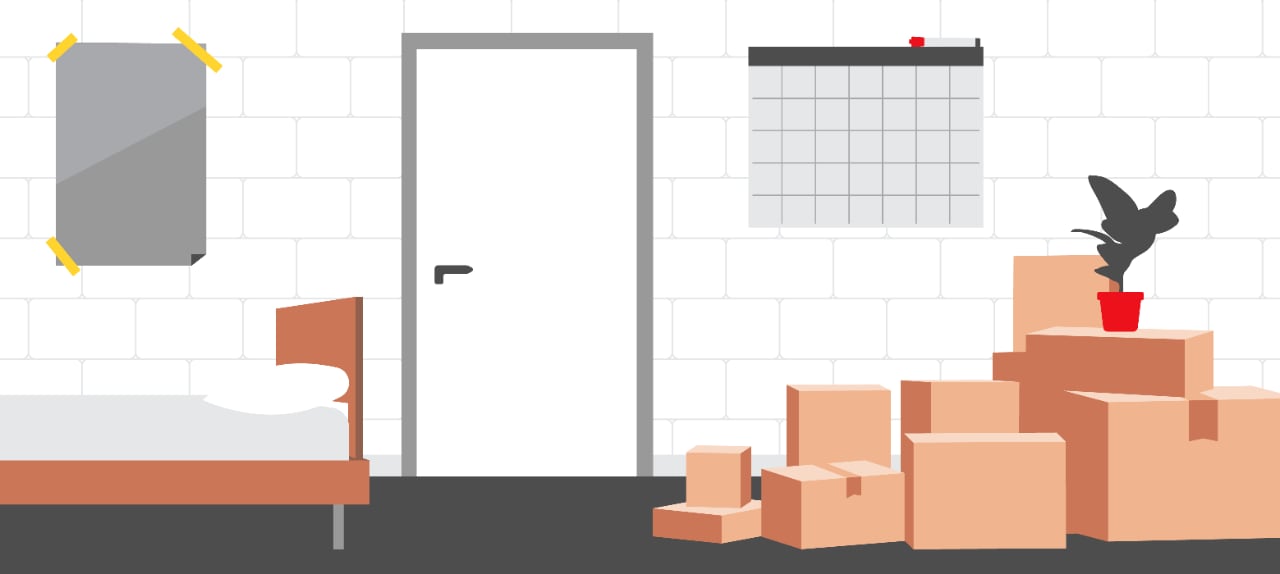Key takeaways:
Whether you’re a student getting ready for post-secondary school or a parent or guardian, figuring out how to pay for higher education can be overwhelming.
In Canada, full-time undergraduate annual tuition fees are $7,076 on average, and that doesn’t include other related costs, like books or housing. Finding the funds might feel like a tough task.
But with a student line of credit, you can borrow money and only use when you need it. If there isn’t a balance outstanding on the line, you aren’t charged interest.
Curious about how a student line of credit works and how it differs from traditional student loans? Read on for the basics.

A student line of credit is a loan banks offer to help cover educational costs, like tuition, books and living expenses. The way it works is that you can borrow money when you need it, pay it back when you have funds and then borrow it again as needed within your allowable credit limit. How much you can borrow — your credit limit — depends on your financial situation and your education program.
Here are some of the key features that set a student line of credit apart from other credit products.
You control how much you use
A student line of credit gives you the freedom to decide when to borrow funds and how much to take out within your credit limit. So, if you’re approved for a student line of credit with a $25,000 limit, that’s the maximum amount you can borrow.
Convenient access to money when you need it
It's convenient to access funds — for instance, with the ScotiaLine® Personal Line of Credit for Students, which offers a credit limit up to $100,000, you can just transfer the money into your chequing account.
Some financial institutions have the option that allows you to write cheques from your student line of credit.
Only pay for what you use
With a student line of credit, you only repay the amount you borrow (the principal) plus the interest charged on the money you borrowed. So, if you have a $15,000 credit limit and borrow $5,000, you pay back $5,000 and the interest accrued on that amount. If you don’t borrow any of it, you pay nothing.
One thing to keep in mind: interest is charged on the amount you borrow until your balance is paid in full — which is why paying off your debt as quickly as you can is a smart move.
Interest-only payments
While you’re in school, most student lines of credit ask you to pay only the interest when you owe money on your account. You will need to make the minimum interest-only payment each statement period.
You also don’t have to start paying back the principal amount you borrowed until after you graduate, which is known as “deferred principal payments.” But on the flip side, you can also pay more than interest-only payments at any time to reduce the principal owing and minimize interest charges over time.
Grads get a grace period
Many private lenders give you some extra time after you graduate before you have to start repaying the principal amount. Known as a grace period, this lets you pay only the interest on your student line of credit for a few months after you finish school.
For instance, the ScotiaLine® Personal Line of Credit for Students offers a 12-month grace period after graduation.* But once that period ends, you must start paying back the money you borrowed plus the interest accrued during that 12-month grace period in the form of a fixed payment loan and any leftover credit under the account will no longer be accessible.
There are two common types of student lines of credit in Canada:
- Student line of credit: This is a standard line of credit designed for students enrolled in a post-secondary school, like the ScotiaLine® Personal Line of Credit for Students.
- Professional student line of credit: This line of credit is for students pursuing professional degrees, such as medical, dental, law school and more. The Scotia Professional® Student Plan line of credit offers higher limits and longer grace periods for select academic programs after you complete your training.

Choosing between a student line of credit and a traditional student loan depends on what you prefer as well as your financial circumstances. Neither is better — they’re just different.
Also, the two products are not mutually exclusive. For instance, you could use a traditional student loan to cover tuition and a student line of credit for other education related expenses, like books and rent. You can talk over all your financial options with your Scotia advisor. Here’s what to consider in order to decide which option may be better for you.
Borrowing flexibility
With a student line of credit, you can borrow what you need up to your credit limit. A traditional student loan typically offers a fixed amount that you can borrow. If you need more than that, you typically have to submit a new student loan application.
To help understand what your financial needs will be as a student, you’ll need to create a budget and financial plan for your time as a student and beyond. Learn more about how to make your first student budget.
Convenience
A student line of credit is especially handy for covering unexpected expenses. If coffee spills on your laptop, a student line of credit can help you finance a new one right away. No need to reapply for a loan — just move the money into your chequing account.
With a traditional loan, a new laptop might have to wait. You may need to reapply for a new loan to borrow more money.
Repayment schedule
Traditional student loans tend to have fixed payments. But student lines of credit let you decide how much to pay back — as long as you pay the minimum listed on your statement.
With a student line of credit, you can also adjust payments as long as you pay the minimum payments (usually interest-only payments while you’re still in school). You can choose to pay more when you have extra funds or just the minimum when your budget is tight.
Traditional student loans have fixed, scheduled payments, and missing a payment puts you at risk of defaulting on the loan.
Interest rates
Student lines of credit have variable (changing) interest rates, while traditional student loans have fixed (constant) rates. Variable rates may rise and fall over time, which could affect the amount of your payments from month to month, while fixed rates are more predictable and don’t change for the term (or period) of your loan.
Another consideration: As of April 1, 2023, the Canadian government stopped charging interest on all Canada Student Loans, including loans currently being repaid.1 This perk doesn’t apply to private student loans (ex. those provided by a bank or other private lender) or lines of credit.
Financial aid/relief
Government-backed student loans often come with financial aid options, including grants, bursaries, loan forgiveness and repayment assistance programs. For instance, eligible physicians can get up to $60,000 and eligible nurses can get up to $30,000 forgiven on their Canada Student Loans.2
It’s not all rainbows and unicorns. Consider these risks before hitting send on your application for a student line of credit.
The interest rate can fluctuate
Since the interest rate on a student line of credit is variable, your monthly payment and costs can go up or down. It depends on the Bank of Canada lending rates and the financial institution’s prime rate. You’ll need to factor this into your budget as you pay back the line of credit.
Cosigner shares responsibility
If a parent or guardian cosigns for the line of credit and the student has a tough time making payments or can’t, the cosigner agrees to pay back the student line of credit. It’s important that the borrower and co-signer understand this before applying for the student line of credit .
Impacts your credit score
Making payments on time is key to maintaining your credit score (and can help you build up a good score). But whether you’re the student or the cosigner, not paying on time or missing payments can damage your credit score. This can make it harder to get approved for loans or credit cards later on.
Interest can add up
The more you borrow, the more interest you will owe. If not managed well, your debt can snowball. Talk to your Scotiabank advisor about what financial options will work best for you and your budget.
Potential to dig a student debt hole
If you don’t use a student line of credit wisely, you could end up with a lot of debt — especially if you borrow more money than you need or use it for things not related to school. By budgeting and keeping your spending in check, you can work to avoid student debt pitfalls.
Post-grad financial pressure
After you finish school, you must start to repay both the borrowed amount and the accrued interest. This can be tough if you’re not earning much or still looking for work.
Through your time as a student, look for career mentorship and resources along the way, so you can focus on your career and bright future after your graduate instead of your debt.
It depends on the financial institution, but here are a few general steps to follow.
Step 1: Review the eligibility criteria
Check if you meet the lender’s requirements. To qualify for a ScotiaLine® Personal Line of Credit for Students, you must be:
- A Canadian citizen or permanent resident enrolled in a certificate, apprenticeship, degree or diploma program at a Canadian or American post-secondary school.
- An international student enrolled in a Canadian graduate program, provided they apply with a co-borrower who is a Canadian citizen/permanent Canadian resident.
Step 2: Complete the application
Fill out the lender’s application form. With the ScotiaLine® Personal Line of Credit for Students, you can do this in person at a branch. Be prepared to give details about your identity, money situation, credit history, education and, if needed, information about the person who is your co-signer. You should also bring a proof of enrollment document showing that you're a student.
To apply for the ScotiaLine® Personal Line of Credit for Students, just book an appointment at a nearby Scotiabank branch and we'll walk you through the process. To apply for a professional student line of credit if you’re eligible, find your local Scotia Professional® Student Plan representative related to your program and contact them for more details.
Can parents open a student line of credit on behalf of a student? Or can a student line of credit be in the parent's name?
No, parents can’t open a student line of credit on behalf of a student. The student needs to apply themselves. But if you’re a parent, you can cosign for a student line of credit, which can help the application process.
If approved, access the money
If you’re approved and have signed all the required paperwork, you’re good to go! You should be able to access the available credit in your student line of credit almost right away.
Bottom line

A student line of credit can be a flexible way to help pay for post-secondary education, with a grace period before you need to start repaying it. You’ll only have to pay back what you borrow and the related interest, although you’ll need to pay interest on the money you owe while you’re in school. You will also have to pay interest on your balance until it’s fully paid off. If you’re a parent, this might be a great option as your child navigates student life. Whether you are a student or the parent of a student, a Scotia advisor can help you come up with a plan to pay for this next chapter.


